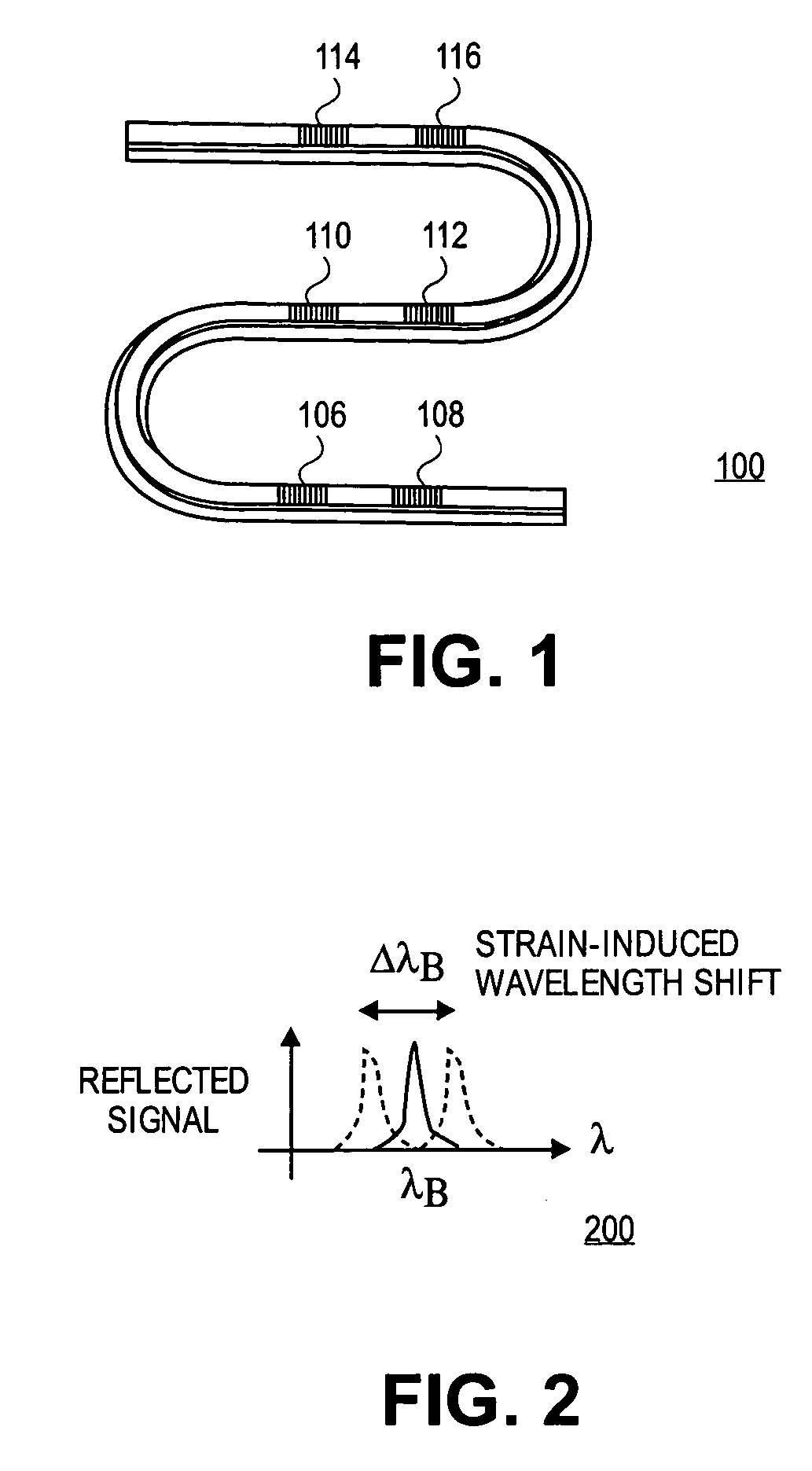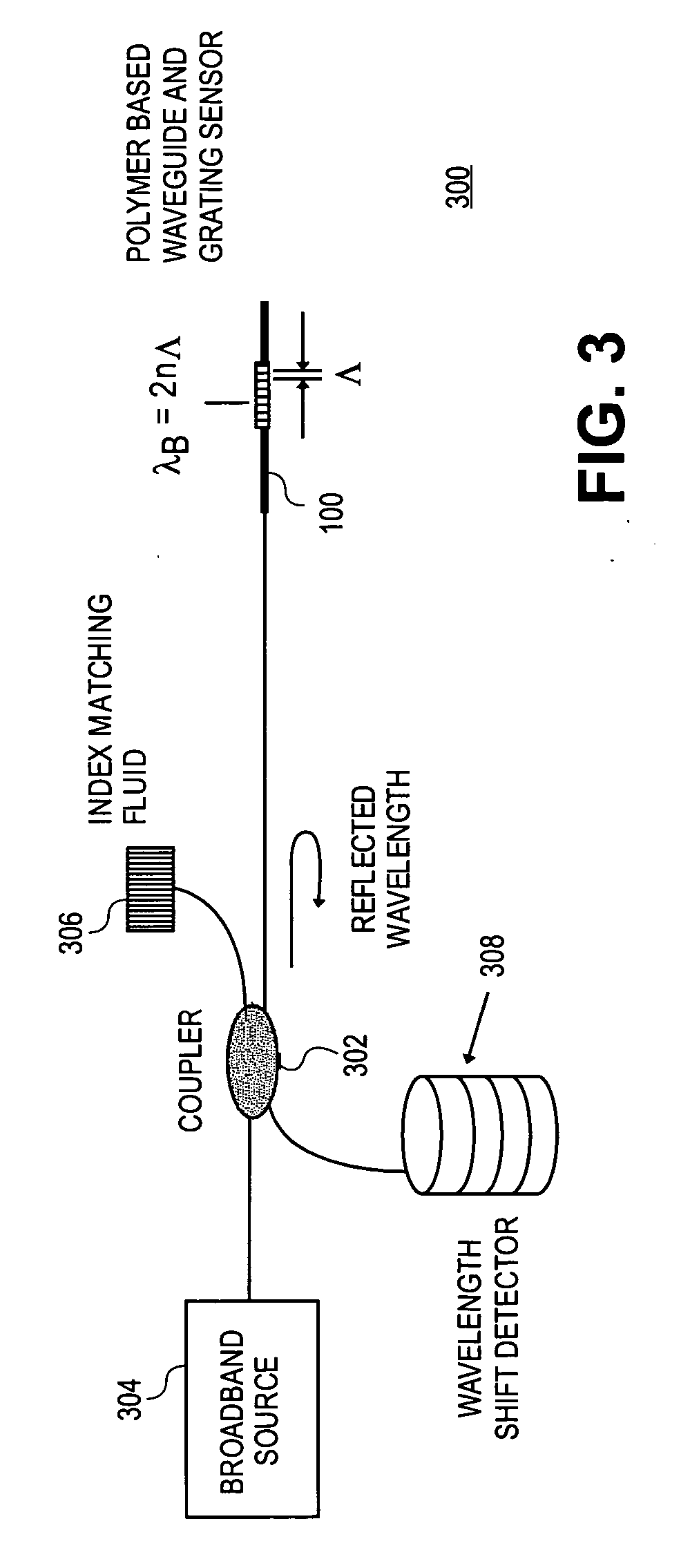Polymer based distributive waveguide sensor for pressure and shear measurement
a distributed waveguide and sensor technology, applied in the field of sensors, can solve the problems of low sensitivity, large deflection, and unsuitable array use of gages, and achieve the effect of high spatial resolution
- Summary
- Abstract
- Description
- Claims
- Application Information
AI Technical Summary
Benefits of technology
Problems solved by technology
Method used
Image
Examples
Embodiment Construction
[0013] In embodiments of the present invention, an apparatus is defined for providing measurement of pressure and / or shear stress over an area using a flexible polymer-based Bragg grating sensor. This sensor may be an innovative use of existing waveguide technology and micro-electromechanical system (MEMS) fabrication techniques. The sensor may have high spatial resolution and be able to conform to and be embedded into a structure of interest. Using Bragg grating technology will allow collection of data from a large number of pressure points within the sensor using only a small number of input and output channels. By using highly compliant silicone rubber as the optical waveguide, the sensor system may be able to conform to the structure of interest. Polymer materials used here are biocompatible (i.e. silicone rubber) and have a mechanical impedance to the plantar soft tissue.
[0014] In one embodiment, a pressure sensor includes a flexible substrate. A waveguide may be disposed in o...
PUM
 Login to View More
Login to View More Abstract
Description
Claims
Application Information
 Login to View More
Login to View More - R&D
- Intellectual Property
- Life Sciences
- Materials
- Tech Scout
- Unparalleled Data Quality
- Higher Quality Content
- 60% Fewer Hallucinations
Browse by: Latest US Patents, China's latest patents, Technical Efficacy Thesaurus, Application Domain, Technology Topic, Popular Technical Reports.
© 2025 PatSnap. All rights reserved.Legal|Privacy policy|Modern Slavery Act Transparency Statement|Sitemap|About US| Contact US: help@patsnap.com



